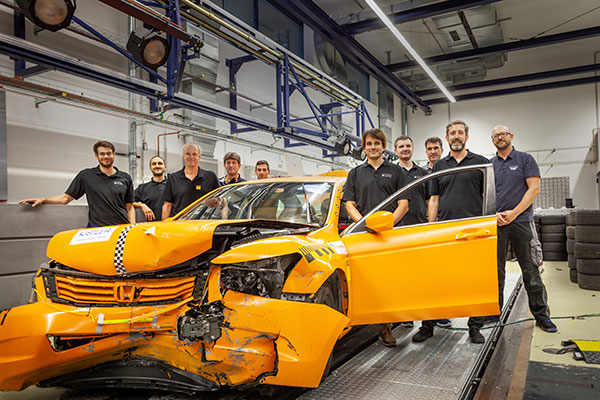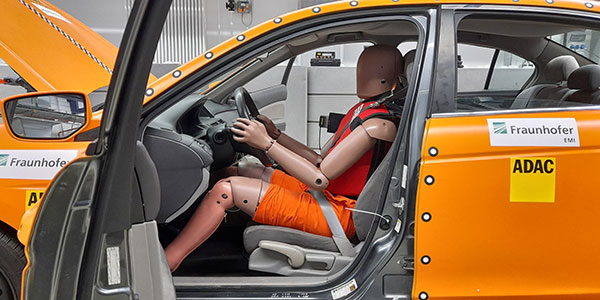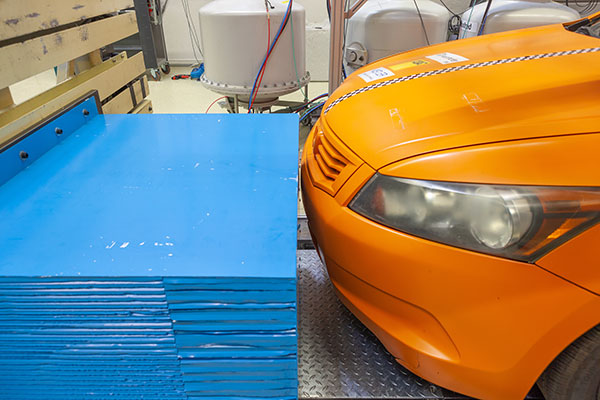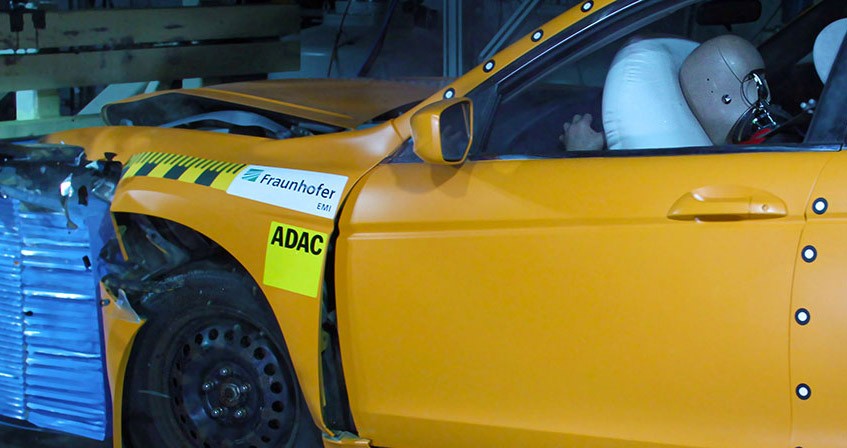


Euro NCAP MPDB test deploys X-ray diagnostics and computed tomography: Fraunhofer Institutes EMI and IIS/ERZT carry out tests together with ADAC and Kistler Instrumente GmbH.
Imagine a typical accident scenario on a country road: Two vehicles at medium speed meet in a frontal crash. In most collisions of this type, the actual impact touches only a certain area of the vehicle front, not the vehicle in its full width. The effects of such a head-on crash are simulated in the crash laboratory. The test configuration presented here is based on the Euro NCAP MPDB test (mobile progressive deformable barrier), which was introduced in 2020 and uses an overlap of 50 percent.
At the Crash Center of Fraunhofer EMI, the use of X-ray diagnostics (X-ray car crash, X-CC) makes it possible to analyze the temporal progress of deformations of inner, non-visible structures while the impacting vehicle forces its way into its collision partner. Information thus gained from the experiment is, in turn, employed to advance FE computer simulations and offers insights into how safety can be enhanced by vehicle design.
The driver dummy in this test, a THOR-50M, is a highly sophisticated and sensitive test device, developed to accurately estimate the risk of head, neck, chest and abdominal injury. The dummy was supplied to EMI by courtesy of our partner Kistler.
New crash test puts inner vehicle structures under the microscope: This is how it works
In order to protect the occupants in the test vehicle, the impact forces have to be directed to vehicle parts where the energy can be absorbed effectively and safely. Insufficient vehicle structures pose the risk that vehicle parts intrude into the passenger compartment. Therefore, it is important for the deformation zone to collapse in a controlled manner, leaving the passenger compartment as undeformed as possible. A detailed look at how the vehicle velocity decreases during crash and what damages the vehicle causes in the deformable barrier gives evidence of how efficiently the two partners have interacted and to what degree they are compatible.
The test setup in the depicted case shows slightly changed conditions. It has to meet the objective to perform X-ray diagnostics and to generate several pictures of the vehicle front structure during crash.
The barrier consists of an aluminum-honeycomb structure and represents the front of the partner vehicle in a crash. The stiffness of the honeycombs is comparable to a typical mid-range family car. According to the official protocol, the honeycomb barrier is mounted on a trolley. The crash vehicle is not supposed to penetrate the aluminum honeycombs too deeply at any point. The depth of the actual penetration can easily be recognized by analyzing the deformation of the honeycomb structure after crash.

